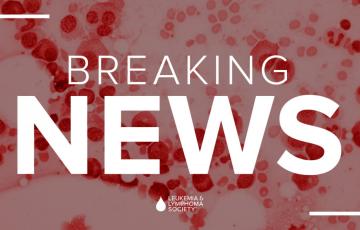Search Results
Signs and Symptoms
Polycythemia vera (PV) develops slowly, and it may not cause symptoms for many years. The condition is often diagnosed during a routine blood test before severe symptoms occur.
Symptoms may include:
From Fighting Fires to Fighting for His Life: One Firefighter’s Journey with Cancer
In late 2014, Eric Wirtz, a firefighter for the Boston Fire Department, lost his 64-year-old mother to pancreatic cancer. During that time he had been experiencing pain in his lower right back and hip area and frequent bouts of flu-like symptoms. Eric says that overall he “just did not feel too good.” Little did he know he was about to face his own battle with cancer. Tests of Eric’s lower abdominal area revealed a large tumor that were inflamed lymph nodes in his hip area.
Signs and Symptoms
Many people are diagnosed with CLL even though they do not have any symptoms. The disease may be suspected because of abnormal results from blood tests that were ordered either as part of an annual physical or a medical examination for an unrelated condition. An unexplained elevated white blood cell (lymphocyte) count is the most common finding that leads a doctor to consider a CLL diagnosis.
Generally, CLL symptoms develop over time. As the disease progresses, a person may experience
One Family’s Inspiring Quest to Help Other Families Impacted By Cancer
A nasty cough and extreme fatigue first led Myrna and Lou Binder to bring their 12-year-old son, Jeff, to the doctor for an examination. But the flu-like symptoms persisted until more tests enabled the doctors to arrive at the shocking diagnosis: non-Hodgkin lymphoma. The year was 1975.

What Is Blood Cancer?
Reviewed by Gwen Nichols, MD, EVP and Chief Medical Officer at The Leukemia & Lymphoma Society

A Starting Place to Prioritize Your Mental Health
Coping with a blood cancer diagnosis and the whirlwind of experiences that follows can be physically, mentally, and emotionally draining for everyone impacted by it.
Whether you're a patient or caregiver, you begin to realize your life will never be the same.
B-Cell Prolymphocytic Leukemia (B-PLL)
B-cell prolymphocytic leukemia (B-PLL) is a very rare and typically aggressive malignancy (cancer) characterized by the out of control growth of B-cells (B-lymphocytes). B-cells are a type of white blood cell that is part of the immune system. B-PLL usually affects older adults with a median age at diagnosis of 69 years, and it is slightly more common in men than women. Most of the time, B-PLL occurs as a transformation or evolution of a more slow-growing B-cell cancer, such as chronic lymphocytic leukemia. Rarely, this is a primary disorder.
T-Cell Prolymphocytic Leukemia (T-PLL)
T-cell prolymphocytic leukemia (T-PLL) is an extremely rare and typically aggressive malignancy (cancer) that is characterized by the out of control growth of mature T-cells (T-lymphocytes). T-cells are a type of white blood cell that protects the body from infections. T-PLL affects older adults with a median age at diagnosis of 61 years, and it is more common in men than in women.
Large Granular Lymphocytic Leukemia
Large granular lymphocytic (LGL) leukemia is a type of chronic leukemia affecting white blood cells called "lymphocytes." Lymphocytes are part of the body's immune system and help fight certain infections. LGL leukemia is characterized by enlarged lymphocytes, containing noticeable granules, which can be seen when the blood is examined under the microscope. There are two types of LGL leukemia: T-cell (T-LGL) and natural killer cell (NK-LGL). Each type may be chronic (slow-growing) or aggressive (fast-growing).
Treatment of Acute Promyelocytic Leukemia
Acute promyelocytic leukemia (APL) is a unique subtype of acute myeloid leukemia (AML). APL cells have a very specific abnormality that involves chromosomes 15 and 17, leading to the formation of an abnormal fusion gene called PML/RARα. This mutated gene causes many of the features of the disease. APL accounts for about 10-15 percent of all adult AML cases diagnosed each year.
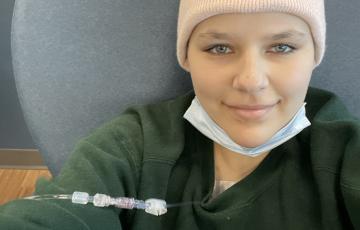
Grace
On February 6, 2023, I was diagnosed with stage 3 Hodgkin lymphoma (HL). However, my story starts months before that. I was attending my sophomore year of college at my university when I started experiencing symptoms I did not understand or put together. I started experiencing extreme exhaustion, I was dropping weight very fast, and I was always lightheaded. I decided to come home only three weeks into my spring semester because I couldn’t keep up my course load with how bad I was feeling.
Chronic Lymphocytic Leukemia 3D Model
.model-icon-key-mobile{ display:none;} @media only screen and (max-width: 767px) { .model-icon-key-desktop{ display: none;} .model-icon-key-mobile{ display: block;} }This model contains the following chapters. Click the "Interact in 3D" button to begin.
- Healthy Bone Marrow
- Normal Blood Cell Production
- Proliferation of Cells and the Crowding Out of Normal Cells
- Signs and Symptoms
Chronic Myeloid Leukemia 3D Model
.model-icon-key-mobile{ display:none;} @media only screen and (max-width: 767px) { .model-icon-key-desktop{ display: none;} .model-icon-key-mobile{ display: block;} }This model contains the following chapters. Click the "Interact in 3D" button to begin.
- Healthy Bone Marrow
- Normal Blood Cell Production
- Proliferation of Cells and the Crowding Out of Normal Cells
- Signs and Symptoms
Acute Myeloid Leukemia 3D Model
.model-icon-key-mobile{ display:none;} @media only screen and (max-width: 767px) { .model-icon-key-desktop{ display: none;} .model-icon-key-mobile{ display: block;} }This model contains the following chapters. Click the "Interact in 3D" button to begin.
- Healthy Bone Marrow
- Normal Blood Cell Production
- Proliferation of Cells and the Crowding Out of Normal Cells
- Signs and Symptoms
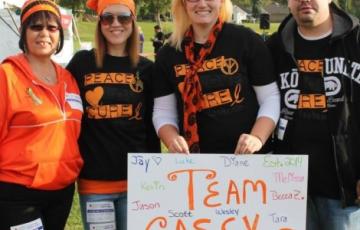
Casey
It was in May, 2014 that 24-year-old Casey Moore began experiencing her first symptoms of chronic myeloid leukemia (CML). For a week straight, Casey had been vomiting every day and was losing a significant amount of weight. This was unusual, as prior to her symptoms, she considered herself a happy, healthy woman focused on her relationship and career. At the time, she was living with her boyfriend and working full time in a chiropractic office -- with no apparent signs of an illness.

Robert
My story starts in March 1983. I was lucky to have been chosen to attend Squadron Officer School in residence at Maxwell, AFB, Alabama. I was, I thought, a healthy 28-year-old and newly married with a promotion to captain the following month. Then, a worrying symptom suddenly occurred. Everything was going dark briefly under physical exertion. I shrugged it off as heat exhaustion until just climbing one flight of stairs resulted in a blackout without unconsciousness. It was then I decided to drive home for the weekend to advise my wife and decide my course of action.
Acute Lymphoblastic Leukemia (ALL) 3D Model
.model-icon-key-mobile{ display:none;} @media only screen and (max-width: 767px) { .model-icon-key-desktop{ display: none;} .model-icon-key-mobile{ display: block;} }This model contains the following chapters. Click the "Interact in 3D" button to begin.
- Healthy Bone Marrow
- Normal Blood Cell Production
- Proliferation of Cells and the Crowding Out of Normal Cells
- ALL Signs and Symptoms
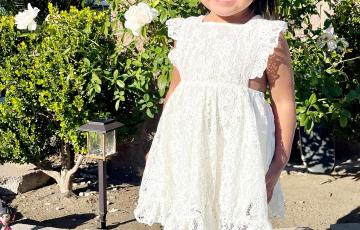
Nevaeh
Nevaeh was diagnosed with acute myeloid leukemia (AML+MLLr)+CNS chloromas on February 2, 2022, at 12 months old. Nevaeh first showed symptoms of high fevers, no appetite, and little to no energy. After a trip to the ER, a few tests, and x-rays, I was told Nevaeh had COVID and pneumonia. She was discharged with instructions to go back if her symptoms worsened. The following morning, Nevaeh’s health was declining. I called 911, and she was rushed to the ER and admitted to the pediatric unit.
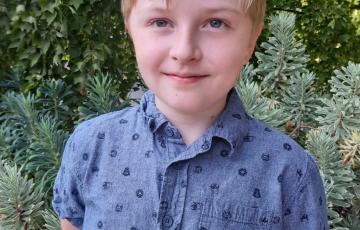
Toben
Toben had entered preschool at 3½ years old, and within a few months, he was getting sick often. He started getting random fevers that would go away in a day. When he got leg and arm pains, we started to get concerned. The pains were so bad that he couldn't walk and would wince when we picked him up or moved him. At his four-year check-up, he wasn't showing any signs or symptoms, so we chalked it up to growing pains. Most of the summer he was fine, but by the end of July, the symptoms were stronger and lasted longer and longer.

Jelien
Jelien started showing signs in early July of 2018. She had bruises and cuts that were taking too long to heal. In November, she kept spiking fevers with no other symptoms, and the doctor suggested giving her Motrin and switching to Tylenol. In December, during her well visit, Jelien’s bloodwork came back with slightly low counts, but her hemoglobin was too low. She was admitted to the hospital for a day for observation, and her counts were recovering. She had a follow-up and was cleared.

Makenzie
My daughter Makenzie was diagnosed with chronic myeloid leukemia (CML) in January 2013, when she was just four years old. She had no signs or symptoms of leukemia. One day, Makenzie had a sore throat and we made an appointment with her pediatrician. Turns out she did have strep throat, but an exam also revealed her spleen was very enlarged. At that point, her pediatrician did bloodwork and learned that Makenzie's white cell count was through the roof. We were sent to Texas Children’s Hospital where later that evening she was diagnosed with CML.

Ethan
Ethan was a typical 3-year-old boy before his diagnosis of B-cell acute lymphoblastic leukemia (ALL). Being a typical boy, he would have occasional bruises on his arms or legs from rough playing with his brother. Approximately one month before Ethan's diagnosis, he was noted to have more bruising than normal on his extremities. Two weeks prior, he was also noted to have a limp. He did incur a fall while walking his bicycle around this time, so the symptom was brushed off. However, he continued to have increased bruising, now appearing on his trunk.

Leigh
In August 2019, I developed pneumonia for the third time in two years. I had been finding that my ability to fight off illness was not as good as it used to be. Once it got to the point that I was having problems breathing, I decided to go to urgent care. Two years prior, I had been hospitalized for pneumonia, and I wasn’t looking forward to it happening again. I Googled the nearest urgent care, and it was closed. There was only one nearby that was open, but I had never been before.

Sofia
My name is Janaye, and I am the mother of Sofia, age 4. Her father's name is Gary. On September 1, 2023, Sofia was diagnosed with pre-B-cell acute lymphoblastic leukemia (pre-B-ALL). She was three. Today, I will share the story of her diagnosis and our journey thus far.
